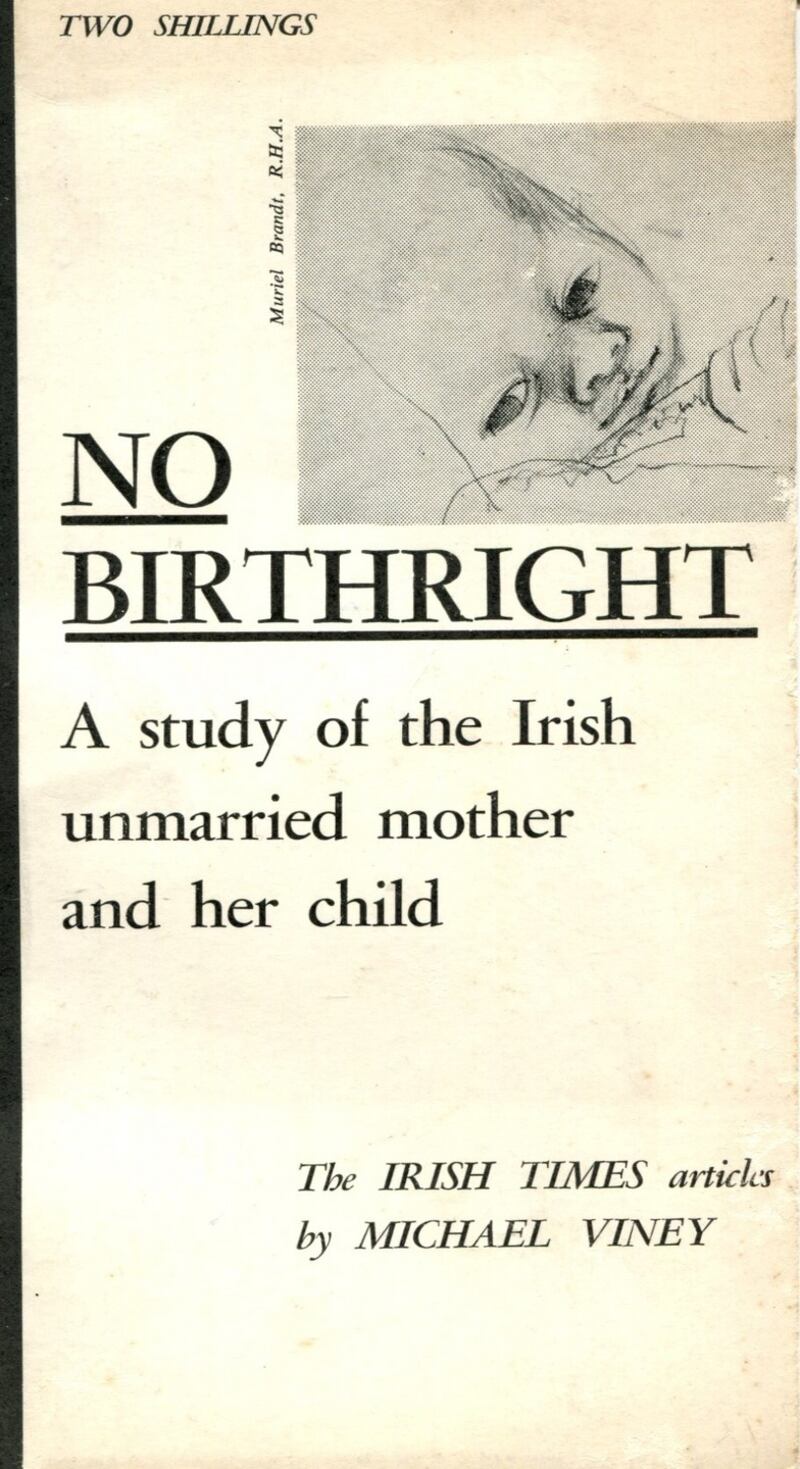This week's column is not about the natural world. Before I began writing Another Life from the west of Ireland, I worked in Dublin as an Irish Times reporter. "No Birthright", my series about unmarried mothers and their children, published in this newspaper in 1964 , left half the story untold. That job belonged to Tuam historian Catherine Corless and to the women and surviving children who, in a very changed society, had the strength to speak out.
The series was, however, the first to examine a subject that Ireland had been keeping under wraps and it is summarised at length in the first report of the Commission of Inquiry into Mother and Baby Homes.
It was one of a sequence of social inquiries I made as a journalistic settler from London's Fleet Street. Other series explored Ireland's treatment of mental illness and alcoholism, young offenders, broken marriages, old age and Irish Protestantism. An outsider's curiosity had turned me into what Diarmaid Ferriter has described as "almost a one-man department of sociology".
How did this happen?
Apprenticed to local journalism at the age of 16, I was a grammar school boy and lefty CND marcher for whom the New Statesman and New Society magazines were stimulating reading. The latter was a journal of social inquiry engaged with a largely secular society. It may have first informed me of the exceptional travelling of Irish women (not all, by any means, unmarried) for safe and confidential English abortion.
My instinct to settle in Ireland, sparked first by a sabbatical year in Connemara, had taken root through a growing regard for The Irish Times, whose staff I joined in 1962, and the wider promise of national economic stirrings and inquiry. Irish newspaper readers, it seemed, still valued information, without routine tabloid twists, so that my outsider’s curiosity might prove timely.

Catholic Ireland presented quite another culture to an English-reared, secular agnostic. Aware of my otherness, I set out to explore my new country with what I hoped were due respect and diffidence.
In the commission’s new report, the summary of No Birthright correctly shows my limitations. Digging out figures from official records and interviewing UK social workers about the Irish women seeking abortions, I was professionally at home. A senior cleric, incredulous at some of my figures, checked them for himself and apologised.
Interviewing the mother superiors, however, over tea in polished parlours, I was on unfamiliar ground. As the State’s vocational and spiritual carers, I believed nuns to be kind, benign people and too readily accepted appearances and what I was told, such as: “Moral censure...is no part of our work. We’re here to help, not lecture.”
Thus, I could suggest that the mother and baby homes had “an unfavourable, out-of-date image...of a forbiddingly austere institution in which the unmarried mother is likely to be shut away for two years or more, doing useless work in the laundry at the bidding of censorious nuns”. The position had changed, I went on, since adoption and washing machines. I could leave a home with the impression of “a fairly good class boarding school for girls”. I was perhaps totally misled by the appearance of the convent.
None of this was tested by seeking out young mothers who had actually experienced the care of the homes – not that any of them, at that time, would have been eager to talk to me. All had accepted the secret service I described as “a benevolent conspiracy of unexpected thoroughness and ingenuity”.
A different perspective came from Ethna, now my wife and partner of 50-odd years and a feminist with keen memories of rural Catholic life.
Ethna heard her local parish priest denouncing an unmarried mother by name from the altar; she is still shocked to recall it. Could it be, she wonders, that nuns, often dispersed with teenage dowries from the fringes of large families, became embittered from being denied a life, and years of dealing with “fallen” women and babies they were led to see as the unfortunate spawn of the Devil?
In the 1960s, the teaching of sociology in Ireland rested almost entirely with priestly academics, for whom the primal texts were the papal encyclicals. These helped to shape a vocational vision of Church-State affairs in which separation of powers was anathema.
The Irish Times booklets that collected my series became, in due course, examples of baseline survey work read with interest by sociology students. In the early 1970s I was invited by a university to contribute a modern volume to a history of social life in Ireland. Flattered and excited, I began research. After most of a year, I begged to be excused, oppressed by the interweave of governance and clerical power in the newly independent state.
That was immature of me. Such history had to wait on the incisive narrative of Diarmaid Ferriter’s The Transformation of Ireland 1900-2000.
In the Ireland of pills, condoms and abortion, an eagerly watchful media probes where it will. The transformation could not be more profound.








